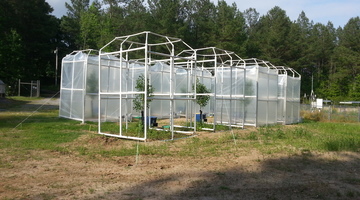

Paula Lourie and Angela Schipper wrote the ferns collection of resources with the aim of creating a botany resource that was uniquely Kiwi in character. Why ferns? We were interested in the idea ...
READ MORE

We can gain an understanding of New Zealand’s ancient past by studying our plants and their distribution. This enables us to find answers to questions such as: where do they come from? how long ...
READ MORE

This citizen science project wants your assistance to extract information from various climate scientific graphics to help combat misinformation and support scientific communication. Using this ...
READ MORE

By comparing some features of fossilised plants with the same features of plants living today, scientists hope to be able to learn more about the effect of changing carbon dioxide (CO2) levels in ...
READ MORE

iNaturalist logs hundreds of thousands of photos of flora, fauna and fungi. There are even sound recordings too. Each is described and geo located. iNaturalist is used by citizens and scientists ...
READ MORE

School science is engaging when it makes connections to students’ everyday lives (Osborne & Collins, 2001) and when they have an opportunity to experience physical phenomena first-hand – the ...
READ MORE

In this recorded professional learning session Chloe Stantiall and Greta Dromgool share their experiences exploring mātauranga as pākehā educators in English medium classrooms. Chloe Stantiall is ...
READ MORE

Here are links to Science Learning Hub resources for primary teachers related to life cycles in the Living World strand of the New Zealand Curriculum. Explore the life cycles of birds ...
READ MORE
Adaptations give an organism an advantage when growing in a particular environment. Dr Patrick Brownsey from Te Papa talks about how the leather-leaf fern has adapted to growing in dry ...
READ MORE
Dr Mark Goodwin of Plant & Food Research explains how flowering plants use self-pollination or cross-pollination in their reproduction. He uses kiwifruit and avocado as examples to show how ...
READ MORE
Dr Patrick Brownsey from Te Papa shows us the 3 major parts of a fern: the rhizome (the underground stem), the leafy frond and the sporangia (the reproductive structure). Points of interest: What ...
READ MORE

Use this graphic organiser to place the food cards where you think they belong. This activity can be done individually, in pairs or as a whole class.
READ MORE

Ferns come in a variety of shapes and sizes and this interactive explores the diversity of form in New Zealand ferns. The fern body consists of 3 major parts – the rhizome, the fronds and the ...
READ MORE

Ferns come in a variety of shapes and sizes and this interactive explores the diversity of form in New Zealand ferns. The fern body consists of 3 major parts – the rhizome, the fronds and the ...
READ MORE